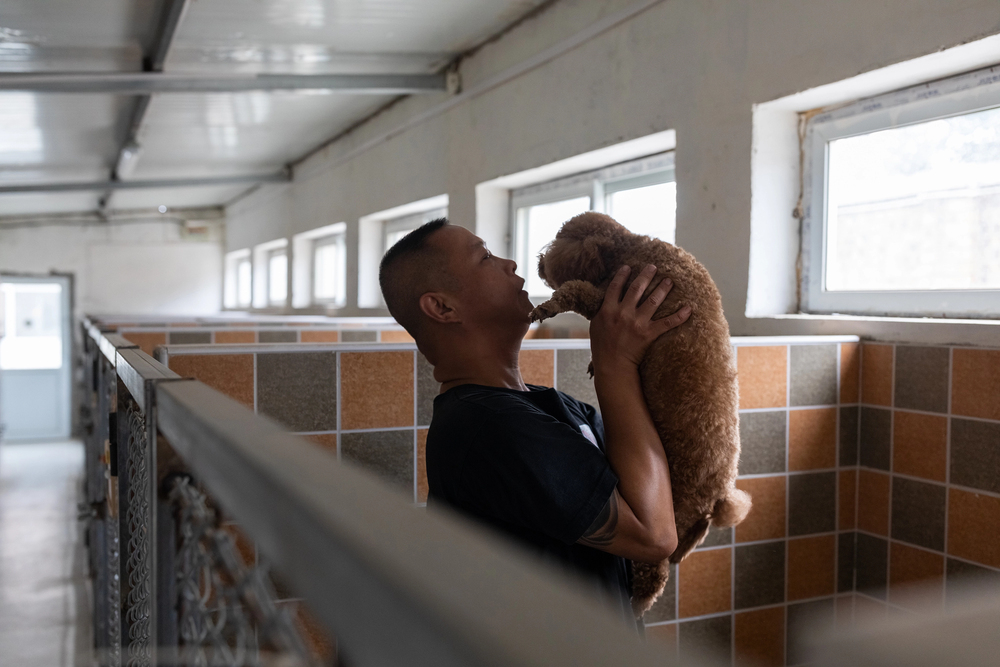Leaving your treasured dog in another’s hands is never an easy choice for any pet owner. Whether you’re planning to take time off for vacation, for work, or due to an emergency, you suddenly have a dire need for a safe and secure place for your dog. One of the favorite choices for this is dog boarding, in which pets receive care at a kennel, pet hotel, or expert’s home. But is dog boarding safe for your dog? That depends on multiple variables, such as the standards of the facility, the temperament of your dog, and the degree of preparation for the stay.
In this article, we’ll discuss what dog boarding is, its pros and cons, tips for identifying an appropriate boarding facility, and tips for getting your dog ready for an enjoyable and stress-free experience.
What is Dog Boarding?
Dog boarding involves pet owners leaving their dogs in the hands of trained professionals temporarily. Facilities can run from basic kennels to fancy pet hotels that provide services like private rooms, playtime, grooming, and even web cameras for owners to peek in. Some have live-in staff, while others have drop-off and pick-up appointments.
The purpose of dog boarding is to give pets a safe, organized, and enriching atmosphere while its owners are absent. This can involve meal feeding, exercise, socialization, administration of medication, and monitoring. Daycare is also available in many boarding places for dogs requiring fewer days of care or socialization while its owners are working.
Is Dog boarding safe?
The quality of the facility and your dog’s adjustment to unfamiliar surroundings determine dog boarding’s overall safety. When properly done, dog boarding is usually safe and healthy for dogs. Professional boarding centers adhere to rigorous health and safety measures, such as vaccination requirements, sanitation standards, trained facility staff, and secure kennels.
That being said, not all dogs react the same to boarding. Some dogs have social personalities and enjoy living among other pets and people. Others become stressed, anxious, or have problems behaving when taken away from their owners or presented to new environments. Your dog’s personality and comfort level are what determine whether boarding is an ideal option.

Advantages of Dog Boarding
Dog boarding has some distinct advantages for the owner and pet. One of its greatest assets is peace of mind. Having your dog in a safe, monitored environment can eliminate much of the apprehension that is inevitable when leaving them behind. Most boarding centers can administer medical emergencies, provide medication, and check over your pet’s demeanor during the visit.
Socialization is also an advantage. Some dogs get along well with other animals, and boarding can offer chances to play and socialize. Exercise, set routines, and trained staff reduce boredom and keep your dog’s mind active.
Also, boarding for dogs can prove to be more dependable than pet sitting, in cases where the sitter is inexperienced and unable to give constant care. Professional boarding centers tend to be better resourced with items such as first aid kits, on-call veterinary services, and trained staff.
Risks and Issues
Although dog boarding is usually safe, risks still need to be taken into consideration. Dogs in boarding environments can get sick with kennel cough even in clean boarding facilities despite vaccination prerequisites. Similar to daycare kids, boarding dogs can get mild infections in spite of measures taken.
Another issue is stress. Some dogs can get separation anxiety, particularly when they do not habituate to leaving home. This can result in barking, pacing, loss of appetite, or gastrointestinal problems. Others can also become aggressive or fearful in relation to other animals or strangers.
Accidents do happen in exceptional circumstances—like mild injuries while playing, dog fights, or efforts at escape. That’s why using an established, highly-rated facility is vital. A properly managed dog boarding facility has security measures in place to limit hazards and react quickly to any incident.
Selecting an Appropriate Dog Boarding Facility
In order to guarantee your pet’s comfort and safety, researching in advance is essential in choosing dog boarding services. You should begin by asking your veterinarian, friends, and local pet associations for recommendations. Online reviews and testimonials can also give you an idea of other pet owners’ experiences.
Once you’ve narrowed down some possibilities, arrange to visit each facility. Observe the cleanliness of the area, the level of professionalism among the staff, and overall facility design. Inquire about vaccination requirements, emergency responses, feeding, and treatment of dogs who have special needs or who are skittish. Established businesses will have updated vaccination requirements and possibly even perform some sort of temperament test prior to admitting new dogs.
Take note of how the staff interacts with the animals. Are they calm, focused, and experienced? Are the facility’s dogs calm and contented? Trust your gut—if something doesn’t feel right, keep searching.

Preparing Your Dog for Boarding
Preparation is key to making dog boarding an enjoyable and safe process. If boarding for your dog is new to you, an initial trial day and overnight stay should be done prior to an extended absence. This familiarizes your dog with the surroundings and minimizes the shock of an abrupt departure.
Ensure your dog is current on vaccinations such as rabies, kennel cough (bordetella), and distemper. Provide the kennel staff with specific information regarding your dog’s feeding routine, medication, allergies, and personality. Bring items familiar to your dog such as its own dog bed, toys, or an item of your clothing to aid in its comfort level.
Be calm and positive prior to drop-off day. Dogs sense anxiety, so your stress can stress them out as well. A positive send-off, followed by diverting to something such as a toy or a treat, can make drop-off day easier.
Alternatives to Dog Boarding
Should you believe dog boarding is not an option for your pet, you have other choices available. In-home sitters can offer one-on-one care in the comfort of familiar surroundings, perfect for geriatric dogs or those who suffer from stress. Some sitters remain in your home, and in addition to security, offer companionship for your dog.
Doggy daycare can be used for brief absences or daytime care, and your dog can socialize without an overnight stay. Your friends or relatives can also take care of your dog for temporary periods, as long as they have pet care experience.
Since each dog is unique, one thing that suits one dog might not be suitable for another. What you need to do is pick an option that suits your dog’s personality, health, and comfort.
Conclusion
So, is boarding your dog safe for your pet? Yes—provided you do so considerately and in preparation. Skilled dog boarding companies provide professional handling, socialization, and safe surroundings in which many dogs flourish. That said, not every dog is comfortable in dog boarding environments, and worries about stress, as well as potential medical issues, should be weighed prior to deciding.
Through research, questioning, and slowly acclimating your dog to boarding, you can ensure an enjoyable experience for all. Whether for the weekend getaway or for an extended absence, dog boarding provides you with stress-free freedom to travel while your furry companion remains in capable hands.
In the end, whether or not to use dog boarding is dependent upon what’s best for your specific dog. With proper surroundings and care, dog boarding can be an enriching, safe, and happy experience for your pet.

